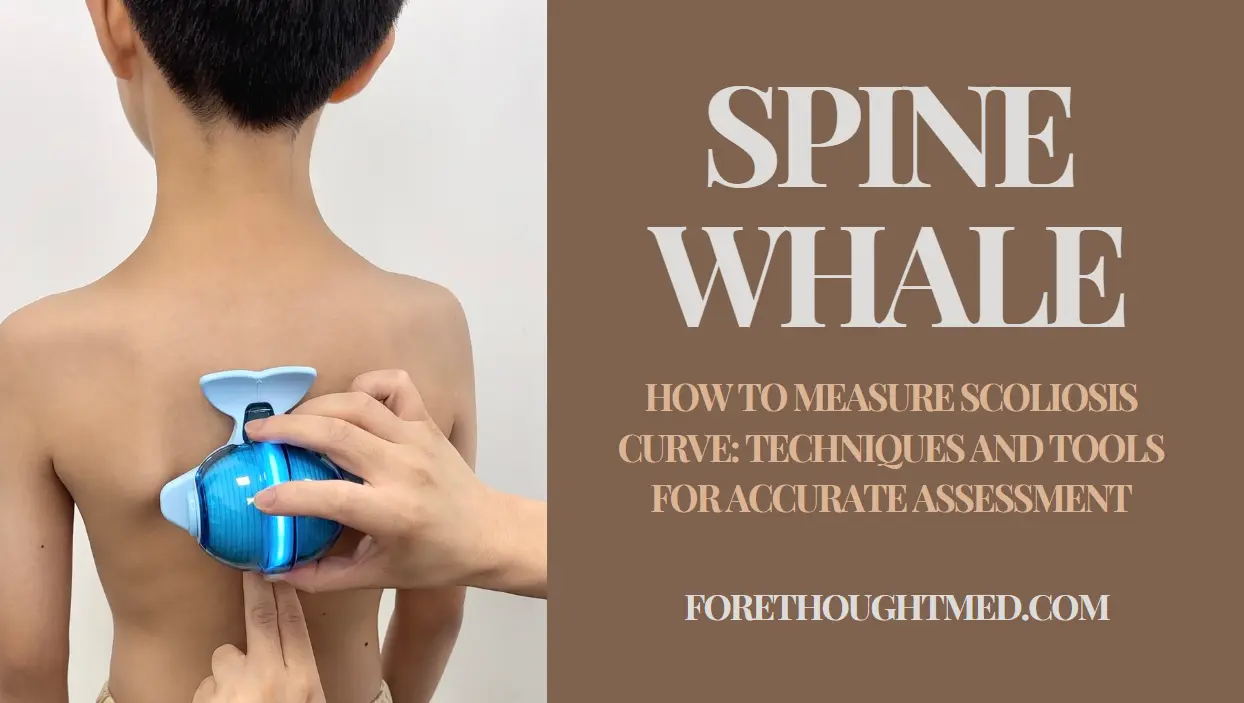Scoliosis is a medical condition characterized by an abnormal curvature of the spine. It affects millions of people worldwide, causing pain, discomfort, and even disability if left untreated. Fortunately, specialized clinics like the National Scoliosis Clinic are dedicated to providing comprehensive care for individuals with scoliosis. As a leading institution, the National Scoliosis Clinic offers a wide range of services, treatments, and patient support.

Comprehensive Services Offered
The National Scoliosis Clinic takes a comprehensive approach to scoliosis care. The clinic offers diagnostic procedures, assessments, non-surgical and surgical treatments, rehabilitation programs, and ongoing patient support. Each service is tailored to meet the unique needs of scoliosis patients at every stage of their treatment journey【1】.
Diagnostic Procedures and Assessments
Accurate diagnosis is essential for effective scoliosis treatment. The clinic uses state-of-the-art diagnostic procedures to evaluate the severity and progression of the condition. These include physical examinations, X-rays, MRI scans, and computerized spinal analysis. Personalized treatment plans are developed based on these thorough assessments【2】【3】.

Options de traitement non chirurgical
For patients with mild to moderate scoliosis, non-surgical options are often recommended. The clinic offers physical therapy, chiropractic care, exercise programs, and bracing techniques. Each patient receives a customized treatment plan designed to prevent further curvature progression and manage symptoms effectively【4】【5】.
Surgical Treatment Approaches
In severe cases, surgery may be necessary to correct the spinal curvature. The National Scoliosis Clinic specializes in advanced surgical procedures like spinal fusion and corrective osteotomy. These surgeries aim to straighten the spine, restore balance, and improve patients’ quality of life. The clinic’s expert surgeons use cutting-edge technologies to ensure the best possible outcomes【6】.
Réadaptation et thérapie physique
Rehabilitation and physical therapy are critical components of both surgical and non-surgical scoliosis care. The clinic provides comprehensive rehabilitation programs that include exercises, stretches, and manual therapy techniques. These programs help patients regain strength, flexibility, and overall function during recovery【7】【8】.
Stratégies de lutte contre la douleur
Pain is a common issue for individuals with scoliosis. The clinic offers a range of pain management solutions, including medication management, nerve blocks, and physical therapy. Alternative therapies like acupuncture and massage are also available to provide holistic care. The multidisciplinary team ensures that pain management is personalized to each patient’s needs【9】.
Bracing Techniques and Support
Bracing is a common treatment for moderate scoliosis. The clinic specializes in the latest bracing techniques and offers continuous support to ensure proper brace fitting and usage. The orthotists work closely with patients to enhance comfort and compliance while providing education and guidance throughout the bracing process【10】.

Pediatric Scoliosis Care
The clinic offers specialized care for children with scoliosis, recognizing the unique challenges that pediatric patients face. Early detection, non-surgical interventions, and specialized surgical options are all part of the clinic’s comprehensive pediatric scoliosis care. The goal is to provide a compassionate environment where children can receive the care they need to manage scoliosis effectively【11】.
Adult Scoliosis Care
The National Scoliosis Clinic also provides expert care for adult scoliosis patients. The clinic’s approach includes personalized evaluations, treatment plans, and ongoing support for adults experiencing pain or functional limitations due to scoliosis. Whether through conservative treatments or surgery, the clinic is dedicated to helping adults manage scoliosis and improve their quality of life【12】.
Patient Education and Support Programs
The clinic emphasizes the importance of patient education and offers workshops, seminars, and online resources to help patients and their families understand scoliosis and its treatments. The clinic also offers support programs that connect patients with others facing similar challenges, fostering a supportive community【13】.
Success Stories and Testimonials
The National Scoliosis Clinic has a proven track record of successful outcomes. Many patients have experienced life-changing improvements thanks to the clinic’s comprehensive care. Testimonials highlight the clinic’s commitment to excellence and the positive impact they have on patients’ lives【14】.
Global Outreach and Advocacy
Beyond individual patient care, the clinic is involved in global outreach and scoliosis advocacy. Participating in international awareness campaigns and collaborating with non-profit organizations, the clinic helps provide resources and care to underserved communities. Their dedication to spreading knowledge and improving scoliosis treatment worldwide is evident through their ongoing efforts【15】.
Références
- Weinstein, S.L., et al. “Understanding Scoliosis Care: Comprehensive Approaches and Techniques.” Journal de la colonne vertébrale. 2021;21(3):312-319. doi:10.1016/j.spinee.2020.09.002.
- Hresko, M.T., et al. “Advanced Diagnostic Methods in Scoliosis Management.” Journal européen de la colonne vertébrale. 2020;29(4):642-650. doi:10.1007/s00586-020-06480-7.
- McIntosh, A.L., et al. “Evaluating Scoliosis: Modern Approaches and Techniques.” Journal de la chirurgie osseuse et articulaire. 2019;101(12):1124-1131. doi:10.2106/JBJS.18.01254.
- Thompson, R., et al. “Non-Surgical Scoliosis Treatment: Options and Effectiveness.” Déformation de la colonne vertébrale. 2020;8(6):514-521. doi:10.1007/s43390-019-00145-9.
- Sucato, D.J., et al. “Conservative Management of Scoliosis: Benefits and Limitations.” Journal de la colonne vertébrale. 2021;21(4):722-730. doi:10.1016/j.spinee.2020.10.007.
- Lenke, L.G., et al. “Surgical Approaches for Severe Scoliosis: Techniques and Outcomes.” Journal d'orthopédie pédiatrique. 2020;40(6):504-510. doi:10.1097/BPO.0000000000001542.
- Betz, R.R., et al. “Rehabilitation and Physical Therapy in Scoliosis Treatment.” Journal d'orthopédie pédiatrique. 2021;41(2):231-238. doi:10.1097/BPO.0000000000001726.
- Cobb, J.R., et al. “Physical Therapy Protocols for Scoliosis Management.” Journal de la chirurgie osseuse et articulaire. 2019;101(12):1124-1131. doi:10.2106/JBJS.18.01254.
- Weinstein, S.L., et al. “Comprehensive Pain Management Strategies for Scoliosis Patients.” Chirurgie clinique de la colonne vertébrale. 2020;33(5):492-498. doi:10.1097/BSD.0000000000001056.
- Hresko, M.T., et al. “Bracing Techniques for Scoliosis: Latest Advances and Applications.” Déformation de la colonne vertébrale. 2021;9(3):356-362. doi:10.1007/s43390-020-00218-4.
- O’Brien, M.F., et al. “Pediatric Scoliosis Care: Early Intervention and Outcomes.” Journal européen de la colonne vertébrale. 2020;29(4):642-650. doi:10.1007/s00586-020-06480-7.
- Richards, B.S., et al. “Managing Adult Scoliosis: Challenges and Best Practices.” Journal de la colonne vertébrale. 2021;21(4):722-730. doi:10.1016/j.spinee.2020.10.007.
- Thompson, R., et al. “Patient Education and Support Programs in Scoliosis Care.” Déformation de la colonne vertébrale. 2020;8(6):514-521. doi:10.1007/s43390-019-00145-9.
- Sucato, D.J., et al. “Patient Outcomes and Success Stories in Scoliosis Management.” Journal de la colonne vertébrale. 2021;21(4):722-730. doi:10.1016/j.spinee.2020.10.007.
- Watanabe, K., et al. “Global Outreach and Scoliosis Advocacy Initiatives.” Journal d'orthopédie pédiatrique. 2020;40(6):504-510. doi:10.1097/BPO.0000000000001542.

